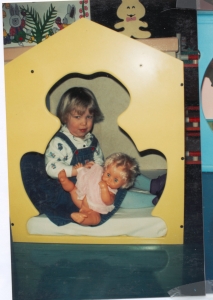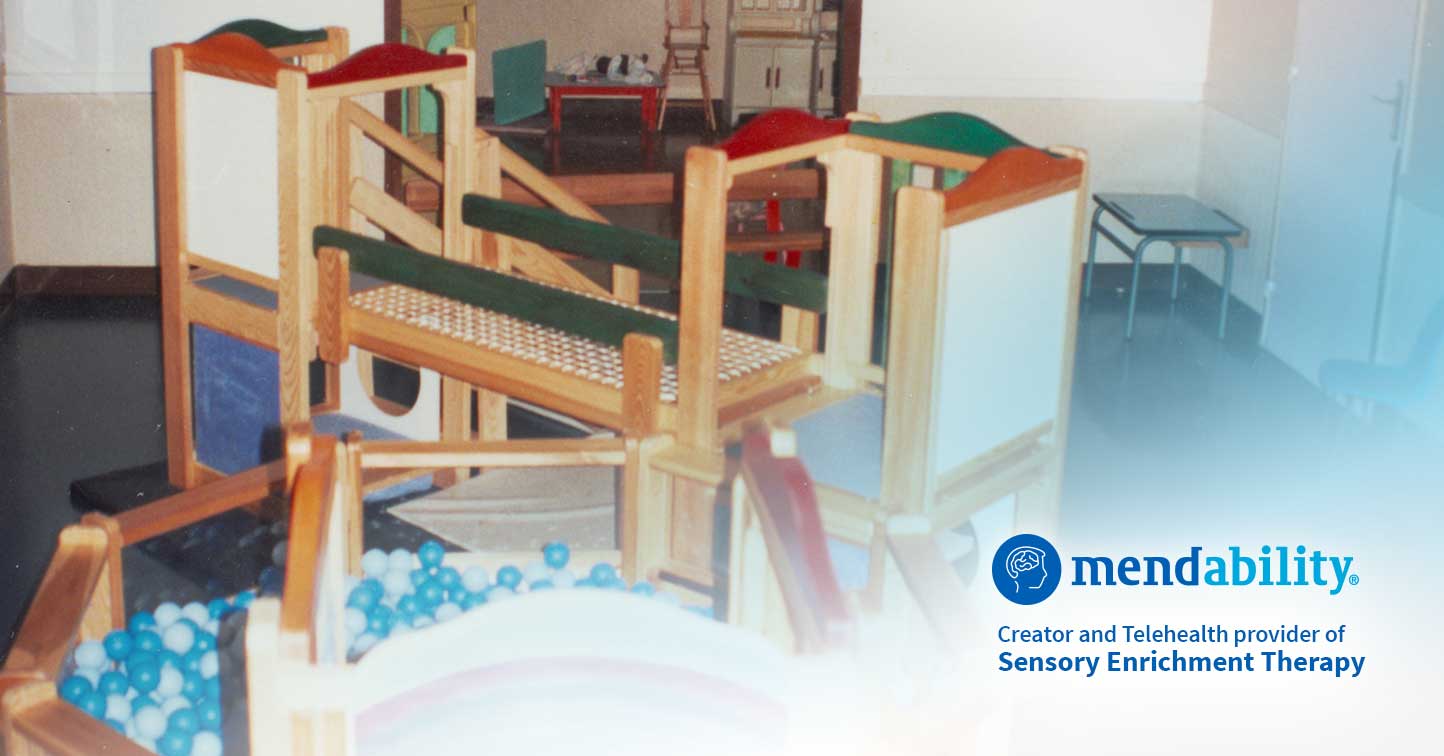Here is a useful report on the impact of Sensory Enrichment on children in daycares, conducted in France in the 1990’s and sponsored by Nestlé International.
Before Sensory Enrichment was a therapy for neurological disorders it was a method of enriching the environment to help typical children develop a healthy and strong brain.
Overview
Sensory Enrichment effectively started in December 1998, when all babies included in the program arrived in their daycare and passed their adaptation process.
The babies included in the program received regular multisensory stimulation three – five times a week, allowing for occasional absences of the children and the workers involved.
The program schedule was followed relatively well. Modifications and changes were exceptional, due to the scheduled fruit or vegetable not being available on that day.
The follow-up on the pilot daycares was carried out at least two times a month. The control daycares were only visited once a month.
During the course of the year, some children from the VIOLET daycare moved up from classrooms because of their age (since they started daycare late, their time in the baby section was shortened), but they continued with the sensory enrichment program in their new section.
The group of children from the ARBRE SEC daycare was removed from the study because of the daycare’s status changes and the impossibility to pursue the study in the new status.
Reports
A first report was concluded in January 1997. Subsequent reports were made in June and July 1998, May 1999 and May 2000.
General Observations
The first modification observed with the babies included in the sensory enrichment program was behavioural at meal time and sleeping time.
In those two usually agitated and noisy periods, we gradually observed a change more and more important in the behaviour of the children: calm, silence, autonomy in regard to the adult.
In the control daycares, the non sleeping children are agitated or cry.
The second year of the sensory enrichment program started in October 1998. Tow children left the daycare, three new ones started in the middle section – ten to fifteen months at the beginning of the year – the beginner children were included in the program.
The schedule is similar to the past year’s, exposures to the same frequency. A member from team 2 was missing, replaced by another member of the same team, but having less experience. Team 2 also switched directors two times during the second year.
Team 1 switched directors once. The new director is really involved and motivated. During a visit on the second trimestre, she expresses the thought to expose the children of the big section – two years old and older – to the program hoping to resolve some major echues in that section :
- lack of appetite from the children, refusal of new food intake
- incapacity from the group of fifteen to calm down or fall asleep at sleeping time.

We naturally encouraged this initiative. Two months later, this director gave us an individual observation report on each child from the big section as well as a verbal report on the general situation of the group following the next four points:
- all the children from the big section finish their plate (except one, a foreigner child who arrived before the report and who did not speak french).
- 40% of the children ask for a second serving, which thing never happened since the opening of the daycare, according to the verbal report from the cook, who was there since the biginning in 1987.
- all the children are calm during sleeping time, except one (a child with important family problems).
- 50% of the children sleep during sleeping time.
The general comparative observation of the children exposed to the program and the children from the control group is positive in favour of the children who beneficiated from the multisensory stimulation program at three levels :
- social: the children are less aggressive, more social, less noisy in their general activity.
- the children’s feeding is more dynamic, they eat better in quantity and variety.
- cognitive: the children are performing better in answer to simple consignes, validate in their social behaviour the rules of the group (put the things they use back where they belong, get their toy during the calming down time before a meal without asking for it…)
The daycares in the program were visited two times a month, the control daycares once a month.
One of the control daycare got a new director who asked to be offered a number of materials to be able to continue with the program : in the facts, continue to receive us without changing anything with its functioning.
CONCLUSIONS
A first report was written in January, the second one in May and July 1998. Those reports were enriched with individual observations with the “Violet” daycare. The drawing of the man was accomplished in June in the two groups. The sample joint as annex is the most marking of the structuration of the children.
The most important point of this year to us is the study of the feeding behavioural modifications and in periode de repos of the “big” group of the “Violet” daycare. We noticed that the critical period does not exceed one month, and we can consider, with 95% of positive results, that it is possible to put together a project of amelioration of the feeding behaviour in the typical young child in a period of one to two month.
We are writing an independent report on this inter study observation.
The first observed modification with the babies included in the sensory enrichment program is a behavioural modification at meal time and at sleeping time.
In those two periods usually agitated and noisy, we gradually observed a change more and more important in the behaviour of the children :
- calm,
- silence,
- autonomy in regard to the adult.
The last film made during sleeping time at the “Arbre Sec” daycare shows a group of eight children with only one asleep, the other babies found a comfortable position and patiently wait the end of the sleeping time. With the pilot daycares, the non sleeping children are agitated or cry.
GENERAL ANALYSIS
FINE MOTOR
Noticeable difference in the asymmetric utilization of the two hands, in the handling and manipulation of small objects, the ability to stack up more than three blocks with the group on the program.
GLOBAL MOTRICITY
Noticeable different motor competencies with the group in the program with balance, and going upstairs.
AUTONOMIC BEHAVIOUR
The children in the program show 85% less aggressive gestures and aggressive behaviour towards the control children.
No apprehension with the adult stranger.
ABILITIES DIRECTLY LINKED TO THE PROGRAM
All children included in the program show the developing of focusing abilities :
- music listening
- olfactive proposition
- visual activity proposition (art or pictures)
FEEDING BEHAVIOUR
The babies included in the program accept to taste new food, in general (two exceptions with mango).
At the end of the third year, the pilot children have a homogene feeding behaviour, regularly take second servings of the offered meal, generally, finish their plate.

